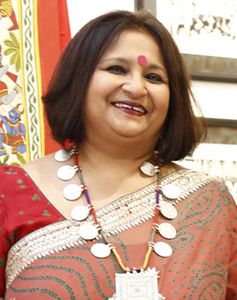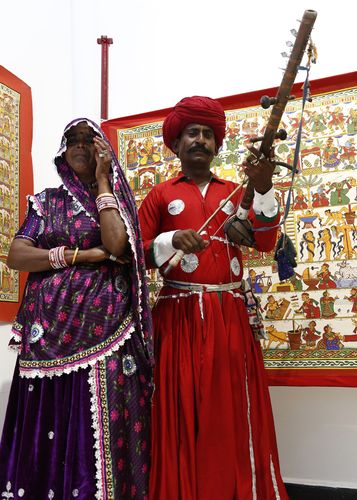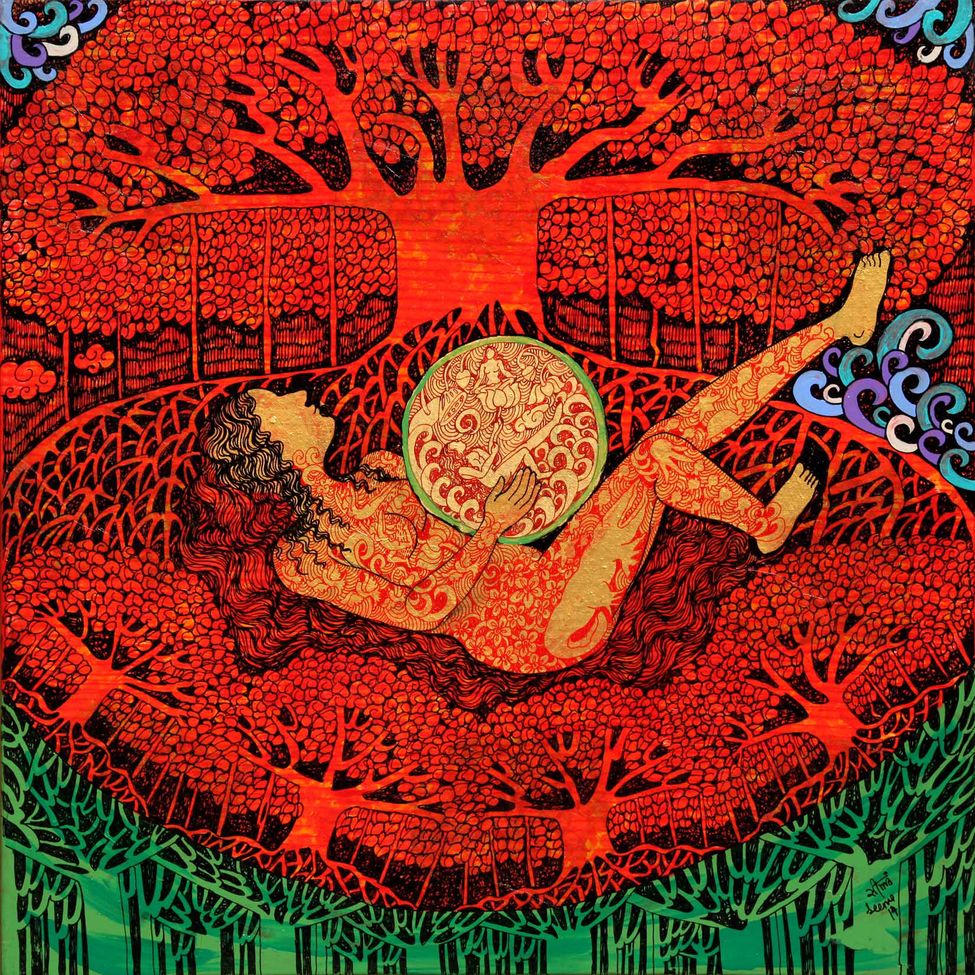 Pragati Agarwal.
Pragati Agarwal.
Suvigya Sharma used to be an exporter of exquisite handicrafts and traditional artwork. A few years into the business, however, the third generation Pichwai painter from Jaipur could not resist his creative urges and he turned to his ancestral profession of making classical miniature paintings.
“I simply fell in love with the detailing, vibrancy and delicacy of traditional art,” says Sharma, who counts the Ambanis, Birlas and Piramals among his clients. Call it the result of the constant search of Indian art lovers for something different or their renewed interest in everything desi or simply the effect of the recent economic developments like the implementation of the Goods and Services Tax, traditional art has been ruling the country’s art market this year.
“There has been renewed interest in traditional art among art collectors and curators. A lot of credit for this goes to the country’s growing military and economic power, which has put the focus on India globally. Also, it has made young Indians proud of their roots and reinvigorated their interest in classical art,” says Pragati Agarwal, founder of Art Tree, an organisation that promotes traditional art and artists. “Moreover, traditional art is simple and easy to understand compared with contemporary art which, at times, is too experimental to understand.”
Agarwal’s recent show of rare Phad paintings—scrolls painted with natural colours depicting scenes from mythology—was a huge hit. The 700-year-old art form of Rajasthan is known for its use of vibrant colours and is accompanied by an oral tradition of rendering the gatha (folklore). Moreover, the works of renowned 18th century painters Nainsukh and Manaku, credited with popularising the narrative of the Ramayan, Gita Govinda and Bhagavata Purana, are turning popular once again.
The South Asian Art Market Report 2017 supports Agarwal’s observations. “The classical Indian art sector experienced a 59 per cent increase in sales in 2016, signalling that collectors and art buyers are widening their horizons regarding different collecting segments. The Indian miniature market has also seen growth in the last three years, with an 84 per cent increase in auction sales between 2014 and 2016,” says the report.
 Pretty picture: A Phad painting show by Pragati Agarwal. The 700-year-old art form of Rajasthan is accompanied by an oral tradition of rendering the gatha (folklore).
Pretty picture: A Phad painting show by Pragati Agarwal. The 700-year-old art form of Rajasthan is accompanied by an oral tradition of rendering the gatha (folklore).
According to a report by Artery India, an art market advisory and intelligence firm, 2017 witnessed 22 auctions by 15 auction houses, but contemporary artworks were particularly weak in terms of market performance. While 2015 recorded sales of 175 contemporary artworks worth Rs 32.9 crore, this year, 183 artworks fetched only Rs 12.63 crore.
The growing art awareness among people is boosting sales of traditional art work, says Sangeeta Juneja, owner of Jaipur-based gallery Artchill. “Till about a decade ago, classic art—largely depicting mythological stories—was considered calendar art and people got drawn to the then new thing, contemporary art. But Indians these days are much more well-travelled, aware and exposed. They realise the importance of saving traditional Indian art forms and are buying it.”
Whether through rangolis or intricately carved wooden spice boxes used in Indian kitchens, art has always been an integral part of our lives. So, how come contemporary art succeeded in the past in overtaking traditional art in both its presence in our homes and sales?
“Because of rapid urbanisation, hectic schedules and shrinking sizes of homes in metro cities, people lost touch with art,” says Sharma. Juneja says the idea of modernity forced them to embrace contemporary art, which dampened the appeal and demand of classical art. “Artists even took to selling tea and vegetables.”
The sheer lack of traditional art, however, turned it into a novelty, boosting its appeal. Industry experts believe that demonetisation and GST have inhibited the spending on contemporary art. “In a conservative art market like India, where people are anyway cautious of spending on art, contemporary art, which is experimental, is bound to feel the heat,” says contemporary artist Seema Kohli. “In shaky times, they want to buy the sure thing and you can’t go wrong with traditional art.”
Another reason is that selling art has become a very complicated process for both artists and curators, says Delhi-based artist Binoy Varghese. “Filing tax returns and sending an artwork from one state to another have become so cumbersome that people are avoiding buying them.”
But contemporary artist Surendra Pal Joshi says with scores of artists joining the marketplace every year, the quality of contemporary artwork has declined, adversely affecting its demand. “The new crop of contemporary artists do not possess the patience of the older ones. All they want is quick success, which results in poor quality,” says Joshi, who conceptualised the Uttara Museum for Contemporary Art in Uttarakhand.
Kohli, however, says all is not lost. “Whether contemporary art or traditional art, so long as art is finding favour with buyers and collectors, it is good news for the fraternity as a whole,” she says. “At different times, different kind of art flourishes. It is just a matter of time and contemporary art will get back its sheen soon.”
 A work by Kohli.
A work by Kohli.








